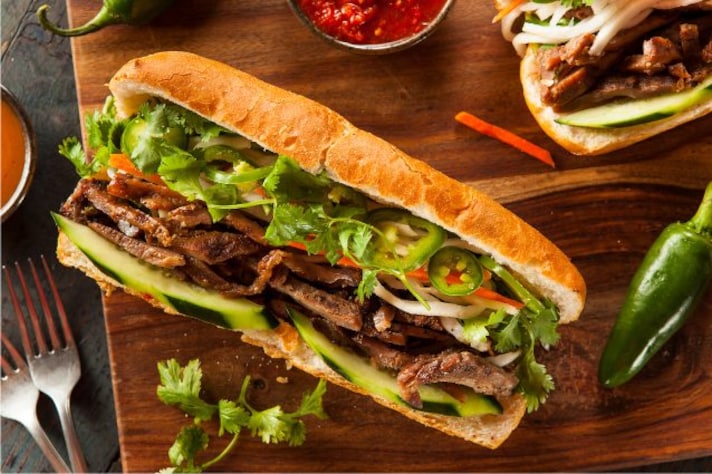
A sandwich is a universal concept understood across the globe: take some fillings, put them between slices of bread, and you're good to go. Simple, right? However, replace that regular sandwich bread with a long, crusty roll and suddenly a new debate emerges: Is it called a hoagie or a sub? Though both terms describe essentially a similar type of sandwich, regional vernacular and subtle differences in ingredients might suggest otherwise. Let's delve into this culinary distinction and find out whether a hoagie and a sub are really the same thing.
What’s a Hoagie?
Originating from Philadelphia, the hoagie is a sandwich that's both a cultural icon and a culinary delight in the Mid-Atlantic. What sets a hoagie apart is not just its long Italian roll, but also how it's packed with deli meats, cheeses, lettuce, tomatoes, onions, and a dressing—typically oil, vinegar, or mayonnaise. The key to a true hoagie lies in the balance of flavors and the freshness of its ingredients. Often, the addition of spices like oregano or a dash of pepper adds a distinct touch that enhances its characteristic taste.

Then…What’s a Sub?
A sub, short for submarine sandwich, gets its name from its resemblance to a submarine's oblong shape. Popular across the United States, subs are characterized by a similar long roll and can be filled with a variety of meats, cheeses, and condiments. However, what differentiates a sub is often the variety and volume of fillings, potentially making it heftier than a hoagie. Subs can also include a wider range of toppings and sauces, tailored to regional tastes or personal preference.
What Are The Differences and Similarities?
While hoagies and subs might appear to be the same, key differences lie in their regional identities and slight variations in ingredient composition. Hoagies typically have a focus on Italian flavors and ingredients, maintaining a traditional approach to its assembly. Subs, on the other hand, might experiment more with flavors and fillings, including global influences and more varied sauces. Despite these differences, both sandwiches share the fundamental structure of meats, cheeses, and vegetables on a long roll, making them more similar than not.

Why the Different Names?
The terms hoagie and sub reflect regional language preferences more than anything else. "Hoagie" is deeply embedded in the Philadelphian culture, likely deriving from Italian immigrants who frequented Hog Island, where the sandwich was a popular working-class lunch. "Sub," however, has broader usage across the U.S., perhaps due to the straightforward visual connection to the shape of a submarine. Understanding these terms depends largely on local traditions and the cultural significance of the sandwich in different communities.
;Resize,width=767;)
